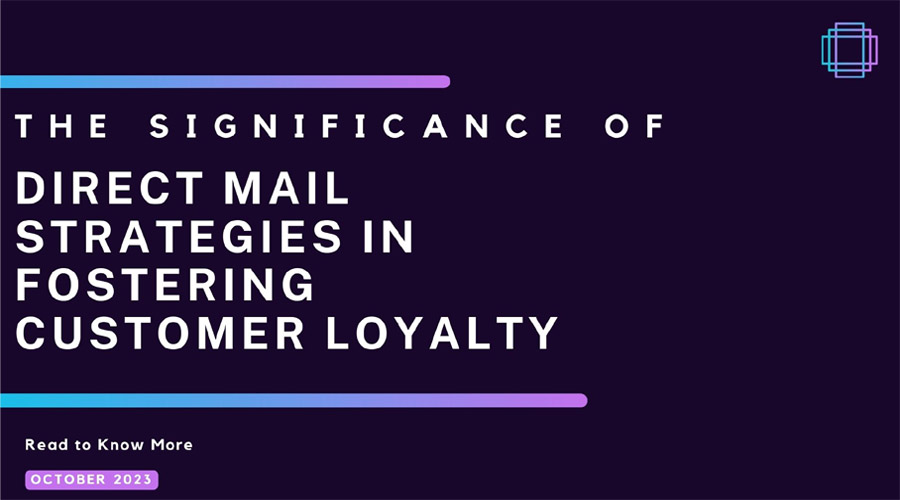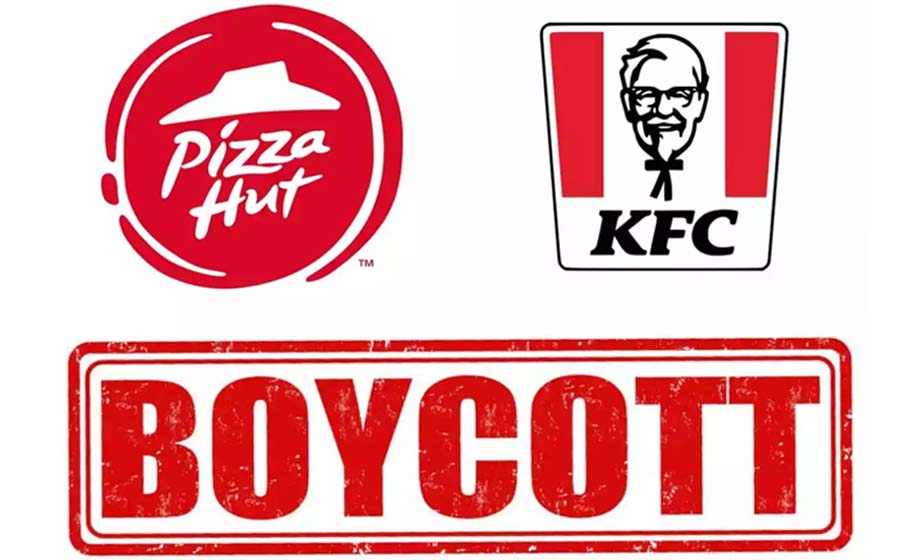A successful company must have loyal customers to sustain long-term profitability, brand advocacy, and growth. Building and keeping customer loyalty has grown more difficult in the current digital era of intense competition and fickle customer attention spans.
But using a direct mail plan is a novel and effective way to build and strengthen client loyalty. An in-depth discussion of the advantages, tactics, and best practices of direct mail in promoting client loyalty is provided in this article.
Understanding Customer Loyalty
Customer loyalty describes the dedication and emotional ties that consumers form with a specific brand. It includes elements like brand advocacy, good word of mouth, and resistance to competing products in addition to simple recurring purchases. For firms, client loyalty translates into increased market share, decreased acquisition costs, and higher customer lifetime value.
Numerous advantages are offered by customer loyalty to firms. Repeat purchases from loyal customers are more likely to generate higher revenue and a dependable customer base. They also act as brand promoters, spreading the word about the company and helping people make judgments about what to buy.
A committed customer’s lifetime value is also more likely to be higher because they are more open to upselling and cross-selling initiatives. In the end, this increases profitability and gives businesses a competitive edge.
Customer loyalty is influenced by many things. Loyalty is built on providing customers with high-quality goods or services that continually meet or exceed their expectations. Additionally, frictionless interactions, attentive customer service, and effective problem resolution all contribute to a great and memorable client experience that increases loyalty.
Customers feel connected and valued when they receive personalised interactions that are catered to their unique tastes and needs. By utilising its distinct advantages and capabilities, the direct mail strategy acts as a potent weapon for promoting consumer loyalty. In the parts that follow, we’ll go over the tactics for maximising the effectiveness of direct mail as well as its function in fostering client loyalty.
The Power of Direct Mail in Building Customer Loyalty
Advantages of Direct Mail
The distinctive features of direct mail make it a powerful instrument for fostering client loyalty. Its tangible nature is one such benefit. Customers can physically interact with the marketing contents in direct mail, as opposed to digital marketing channels, generating a multimodal experience that makes a lasting impact.
Direct mail also provides options for customization. Businesses can customize their direct mail marketing to each recipient’s tastes, demographics, and purchase history by utilizing consumer data. By showing consideration for each person’s requirements, this personalized approach promotes a sense of importance and connection.
Creating Personalized Experiences
The key to successful direct mail campaigns is personalization. Businesses can create personalized communications that connect with recipients more deeply by making wise use of customer data. Customers are made to feel valued and understood by personalized direct mail, whether it uses their names, mentions previous purchases, or offers specific recommendations.
Customized offers, in addition to customized messages, can be a potent weapon for fostering consumer loyalty. Making clients feel special by offering them exclusive discounts, rewards, or promotions via direct mail encourages them to keep engaging with the company.
Engaging and Surprising Customers
Direct mail enables businesses to engage and surprise their customers by fostering creativity and innovation. Businesses may attract customers’ attention and differentiate themselves from the competition by creating eye-catching mailers with distinctive forms, colors, or textures.
Customers’ involvement can be further increased by interactive features. Indirect mail pieces with tear-off coupons, scratch-off areas, or augmented reality components urge participants to actively engage, fostering a sense of excitement and involvement.
Additionally, surprising consumers with unanticipated acts of kindness or presents via direct mail can make a strong first impression. These thoughtful gestures, whether they come in the form of a handwritten note of gratitude or a small sample of a new product, increase goodwill and enhance the connection between the client and the company.
Overall, direct mail is effective because it can personalize experiences, engage clients, and deliver wonderful surprises. Businesses may increase client loyalty and create lasting relationships by utilizing these benefits.
Nurturing Customer Relationships
Providing Relevant and Valuable Content
Providing pertinent and worthwhile information is one of the important components of fostering consumer loyalty through direct mail. You may produce direct mail pieces that offer your clients information or resources they find useful by being aware of their requirements, interests, and preferences.
Examples of instructional products that can demonstrate your expertise and assist clients in making wise decisions include guides, tutorials, or industry insights. They can receive personalized ideas and have their shopping experience improved by product recommendations based on their past purchases or browsing habits.
Additionally, customers may feel cherished and privileged when given access to special content such as first looks at forthcoming products, invitations to VIP events, or insider promos. Building trust with your audience and positioning your business as a trustworthy source of information and solutions may be done by continuously offering content that appeals to them.
Establishing Consistent Communication
To develop regular communication with your customers, direct mail is essential. You keep your business in front of customers’ minds and foster a continuing relationship by sending frequent updates, exclusive deals, and personalized messaging.
Regular updates on new product releases, upcoming occasions, or market trends show your dedication to keeping clients informed and interested. An atmosphere of exclusivity and increased client loyalty can be achieved by making special offers or promotions available only to direct mail subscribers.
Personalized communications, like birthday wishes, anniversary congratulations, or thank-you cards, demonstrate your appreciation for your consumers as unique people. These small acts go a long way toward developing a personal connection and creating a sense of appreciation among clients.
By using direct mail as a medium for communication, you can make sure that your brand is kept visible and current, strengthening client loyalty through frequent and valuable interactions.
Building Brand Identity and Recognition
Direct mail gives your business a physical embodiment, which helps with brand identity and familiarity. Customers are more likely to recognize your brand at a glance if your direct mail items all have the same logos, color schemes, and font.
Your direct mail pieces will stick out in a busy mailbox thanks to distinctive design components like attention-grabbing images, inventive packaging, or inventive folding methods. To increase brand recognition and fortify the emotional bond with your clients, these design decisions should be in line with the personality and values of your company.
Another effective strategy for establishing brand identification through direct mail is memorable storytelling. You may establish a stronger connection with your target audience and leave a more enduring impression by creating storylines that reflect the ideals of your company.
Direct mail assists in reinforcing your brand identity, boosting brand recognition, and establishing consumer loyalty through consistent branding, distinctive design features, and compelling storytelling.
Measuring Success and Driving Continuous Improvement
Tracking and Analyzing Results
You must monitor and analyze important metrics to make sure your direct mail campaign is successful in fostering consumer loyalty. Businesses may learn a lot about the effectiveness of their direct mail operations by tracking data like response rates, conversion rates, and customer feedback.
Response rates reveal the level of interaction and interest your direct mail content sparked. Businesses can evaluate the efficacy of their offerings, messaging, and designs by looking at response rates. Comparing response rates across many campaigns or segments can help you spot trends and figure out what appeals to your target audience the most.
Conversion rates reveal how many recipients responded to your direct mail by doing the required action. Tracking conversion rates enables you to assess the concrete influence of your direct mail on consumer behavior, whether it is through a purchase, participation in a loyalty program, or a visit to your physical store.
Gathering client feedback is crucial for determining the qualitative impact of your direct mail marketing in addition to quantitative measures. Request feedback from recipients via surveys, answer cards, or specific communication methods. This feedback might reveal how they felt overall, how they saw your brand, and what they thought could be done better.
Businesses may make data-driven decisions, pinpoint areas for development, and optimize the next direct mail campaigns to better meet the demands of their customers by reviewing the outcomes of monitoring metrics and customer feedback.
Collecting Customer Feedback
Receivers of direct mail offer a useful opportunity to gather client feedback. Businesses can encourage customers to actively contribute their ideas, comments, and suggestions by including response cards, online surveys, or specific contact information.
Customer feedback provides information about several facets of your direct mail campaign. It can show whether your messaging is effective, whether your offers are pertinent, and whether receivers are generally satisfied. Additionally, it gives clients a way to voice their views, enabling you to better cater future efforts to their unique requirements and preferences.
Additionally, consumer feedback is a technique for enhancing client connections. You can show customers that their ideas count and that you value their input by actively listening to their comments and acting on them. Given that customers like being included in the decision-making process, this engagement promotes a sense of ownership and loyalty.
Businesses can get a better understanding of their customer’s requirements and preferences, spot areas for improvement, and continuously improve their direct mail tactics to provide even more value to customers by gathering and analyzing customer feedback.
Conclusion
By utilizing customization, interaction, and relationship-building, direct mail plays a significant part in increasing client loyalty. Businesses may assess the success of their direct mail operations and make wise decisions for development by monitoring and analyzing important indicators like response rates and conversion rates.
Additionally, gathering client feedback offers priceless information on the preferences, experiences, and suggestions of the recipients. Businesses may continuously improve their direct mail strategy and deepen client relationships by incorporating customer input into subsequent campaigns.
In conclusion, direct mail is still an effective strategy for building enduring client loyalty. Businesses may forge solid client relationships, propel business growth, and achieve long-term success by taking advantage of the personalization, engagement, and measurement opportunities it offers.


